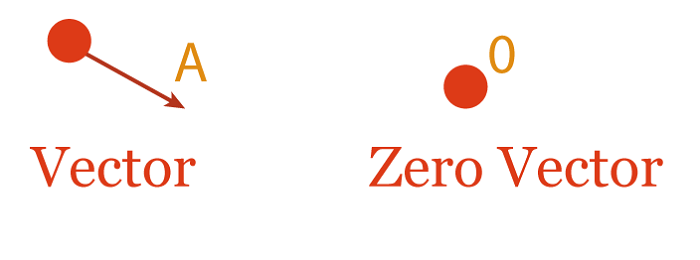Zero Vector (Null Vector)A zero vector is a special vector with the same starting and ending point and is usually represented by a point. In advanced mathematical language, a zero or a Null vector is a vector with zero magnitudes pointing toward no direction. To know more about Zero vectors, first, we have to know about vectors, their definition, their property, and their application, and then we will discuss Zero vector and why it is called so. What is VectorIn Mathematics, we have many independent quantities for the calculation of different things, but certain quantities in mathematics can measure or calculate two or more independent properties at the same time; vectors are also categorized in this category because they can calculate direction as well as magnitude at the same time, vectors play a vital role in Geometrical mathematics, and if we talk about its importance in physics, then vectors are the roots of physics or the fundamental of physics. 
Types of VectorsA vector is a measuring quantity implemented in physics and at the geometrical portion of mathematics; further, the quantities are divided into scalar and vector quantities in physics.
Application of VectorsAs we discussed above that, wherever we have to deal with the direction factor in mathematics then, vectors are the roots for it; moreover, in advanced mathematics and in geometrical mathematics, where we have to deal with dimensions problems, vectors are the key unit that time. In the problem related to planes, vectors were a vital concept at that time; with vectors, we can easily solve the complex problems of multi-dimension. We use vectors in solving almost all concepts of physics. Vector is the spine of Kinematics topic which is one of the most important topics of physics that is responsible for describing the motion of a particle or an object; it helps in understanding the concept of trajectory, which is responsible for launching rockets, bombs and it is also considered at the time of flight take off. A few of the application of Vectors in real life is as follows:
Features of Zero Vector or Null Vector
Next TopicArea of Quarter Circle
|
 For Videos Join Our Youtube Channel: Join Now
For Videos Join Our Youtube Channel: Join Now
Feedback
- Send your Feedback to [email protected]
Help Others, Please Share










